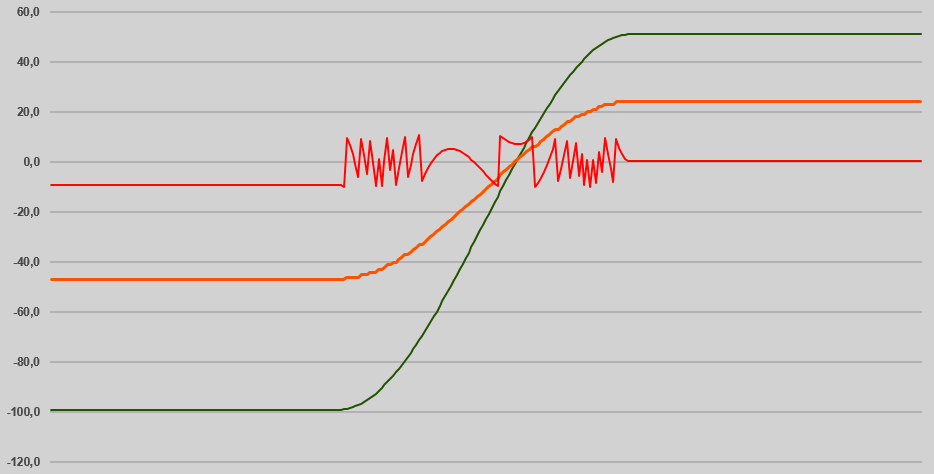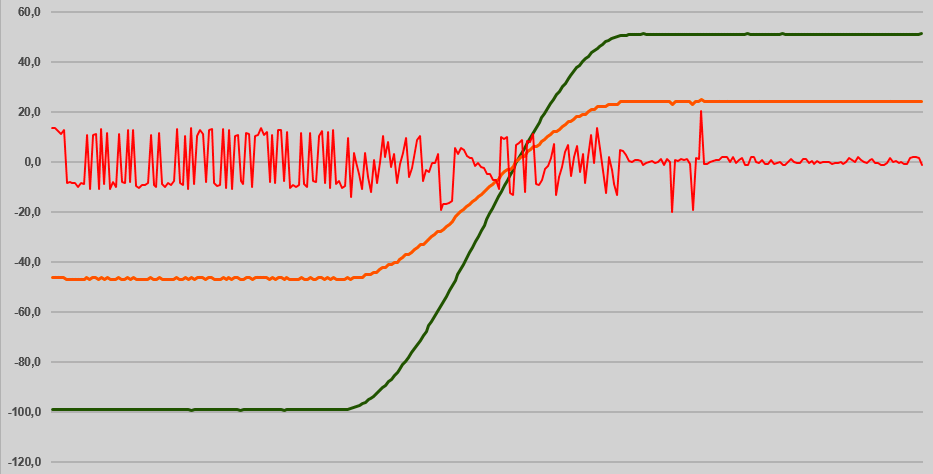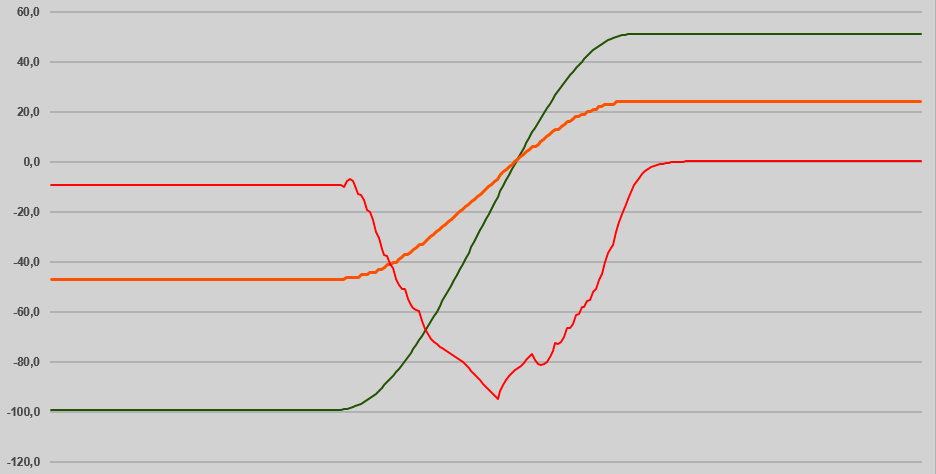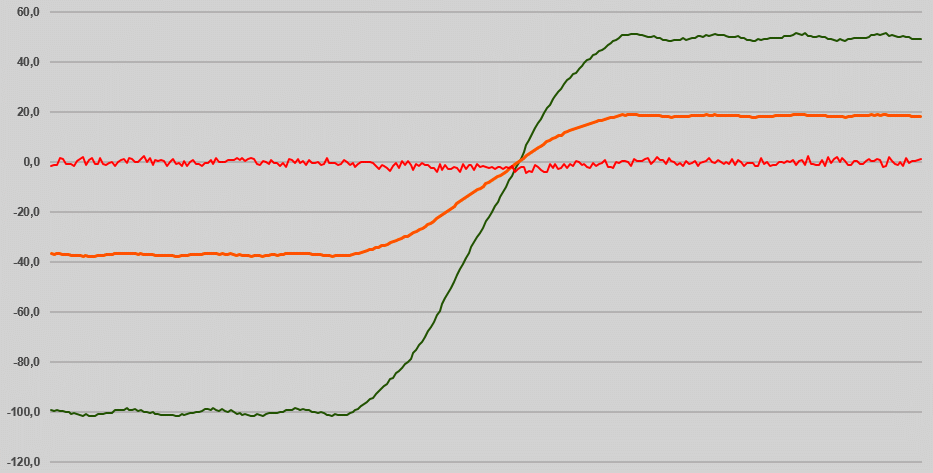| 96 kHz.org |
| Advanced Audio Recording |
|
The Limits of MIDI This article deals with the limitations
of MIDI in terms of the controller resolution and shows the
difference between 8-Bit and 10-Bit MIDI as I proposed it in
MIDI
2000.
MIDI Resolution of 8 bits:
Starting from an angle
position of -100 degrees of the potentiometer a rapid knob movement
up to +50 degrees is performed during a period of 100ms. The
movement is represented by the green curve. This was a measured action and comes close to reality.
MIDI Transmission with noise:
Typically analog noise is present in the signal, when a potentiometer is scanned which has to be processed in order to shun some issues. In some situations, the noise leads to an unlucky rounding and is transmitted to the sound generation device as digital alias information. The physically clean and smooth knob movement in this example shows up really bad after all depending on the detailed values and rounding. Many MIDI devices try to solve this issue my filtering the incoming data:
MIDI Resolution and Delay with smoothing
It's time for MIDI 2000
This diagram shows the situation at a higher resolution and transmission speed. Already with 10 Bits of resolution in my MIDI 2000 system, the granularity is significantly smaller even without smoothing techniques. For comparison reasons, the MIDI value here is shown with the same ratio as in the diagram above. In reality there are up to 4 bits more for a precise representation of the knob movement coming even closer to reality and get a quick response. Also the higher transmission speed lowers any possible delay. Let's get analog
In this chart, a full comparison between true physical movement of the knob and the final non filtered result in the MIDI2000 device at full resolution is shown. Both digitized noise and transmission delay are taken into account. Moreover a test signal of about 300Hz is added to the primary signal before digitizing and sending over MIDI. Because of the high transmission rate of 48kHz S/PDIF only 10us delay do occur for the required 2x12 bits of the fully MIDI command covering the controller movement. Even the 300Hz Signal is represented in the MIDI-Signal appropriately. Together with the resolution this causes only a minimal deviation from the reality of about 2 digit at 12-Bit resolution in total! This is better than 0,1% deviation for the raw values. Even without filtering to possibly remove analog noise from the data this is almost 99,9% accuracy regarding the real clean movement of the knob.
Read about another article about Problems with MIDI.
|
| © 2000 - Jürgen Schuhmacher |




